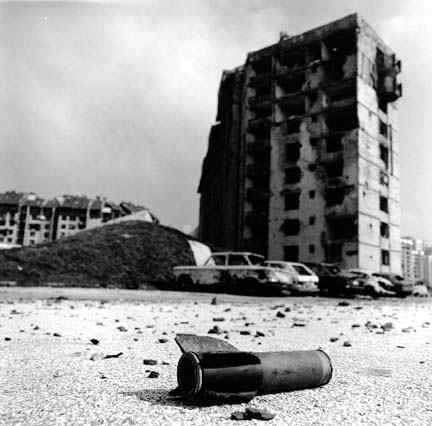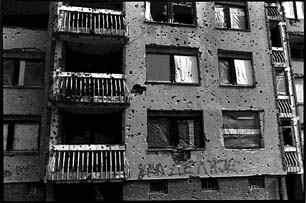




 |
 |
 |
 |
 |
|
| Contents Forward Backwards |
|
On the first day of spring, in 1996, we walked through Dobrinja. Children were playing, birds were singing, and people were going about their business as if the destruction around them were merely a movie set. Our first assumption was that buildings such as these had to be uninhabitable. We were wrong. People were now walking up 15 flights of stairs to their homes in destroyed and gutted buildings for the simple reasons that (1) it was their home, and (2) there was no alternative. We couldn't imagine the fierce battles that must have been waged to turn masonry into Swiss cheese, but we saw the evidence everywhere. The mortar shell to the right was spent, but many we saw at our feet were not. They were already becoming deadly toys for bored children. Many buildings had trenches, dug by Bosnian POWs, leading in the front entrance and going out the rear entrance. Trenches went under roads, sidewalks, and across fields. After Dayton was signed, the Zone of Separation between the Bosnian Croat Federation and Republika Srpska went right through individual buildings in Dobrinja. Dayton finally cemented what the Serbs could not do in four years of war--a divided Bosnia. |
  |